
Training Matters! Don't Sell your EHR Experience Short
The Villain of Healthcare IT
It’s no secret: the EHR is healthcare’s biggest boogey-man. You don’t need to look far to find a general feeling of dissatisfaction and even outright loathing for the core health IT system. To be sure, those accusations are not without merit; after all, the system was designed with billing in mind. Spurred on by regulation rather than innovation, EHRs have traditionally focused on meeting meaningful use requirements instead of on optimizing usability.
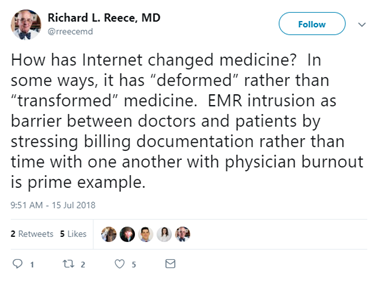
Imagine a car designed with fuel consumption in mind but sold as the future of transportation. You end up with the Hummer H2. It is big and bold, chugs fuel at 13 MPG, and on the surface looks impressive (if you squint a bit). Jump into the driver’s seat, however, and you’ll realize how great this is for your local gas station’s bottom line and how obnoxious you’ll feel while driving it. That’s how many clinicians feel about their EMR experience.
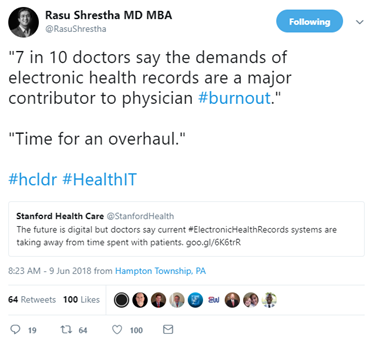
New data shows that the buying of EHRs has slowed and shifted to the community hospital market. For the majority of providers, the discussion has shifted from first-time implementation to optimization. Now more than ever, the market is primed to adopt and make necessary changes to drive the EHR forward.
I recently wrote about how the artificial intelligence (AI) hype has outpaced providers’ willingness to dig into and implement many of the AI offerings currently available. One of the biggest reasons healthcare leaders have cited for their lack of interest is their desire to work on the tools they already have in place.
Vendors’ Responsibility
Thankfully, it seems that vendors aren’t deaf to the pleas of their customer base. It doesn’t take long online to see that big EHR vendors like Allscripts, MEDITECH, and others are making quite a buzz about fixing EHR usability woes. The real question remains: Can they deliver?
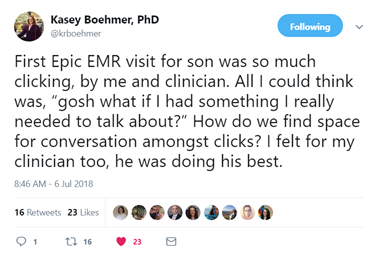
Creating a usable EMR is not an easy job for developers, as they often have to decide between keeping their tools compliant to regulation and making their tools innovative and user friendly. For vendors and providers, this means working with policymakers to first understand the problem and then help craft legislation that supports (or at least doesn’t hinder) the development of more usable systems.
Additionally, vendors should do everything they can to incorporate end users and real-world applications into their designs.
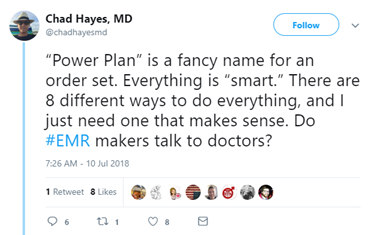
Provider Responsibility
Are we stuck in a rut while we wait for the wheels of regulation and development to slowly churn? Thankfully, no! There are health systems out there that have found ways to keep their physicians happy and satisfied even with today’s imperfect systems. Many of these providers are participants in the Arch Collaborative, so we’ve been able to collect data on their successes and identify what works so well for their end users. According to the Arch Collaborative data, providers should focus on:
- Training
- EHR personalization
- Organization Culture
Training has been shown to impact an end user’s satisfaction with their EHR for up to five years post-go-live. The saying goes that first impressions are everything; this seems especially true when it comes to a clinician’s first experience on a platform. Provider organizations may want to reconsider the temptation to cut costs by cutting training resources during the important first weeks with a tool.
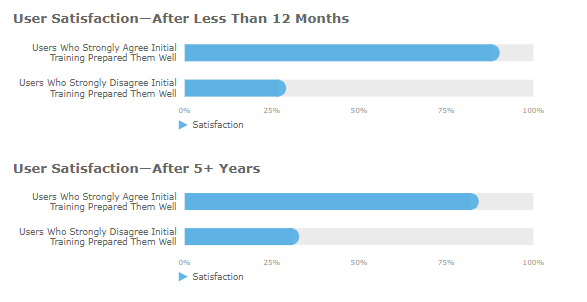
Most organizations have little to no follow-up training for their clinicians after go-live, apart from update emails and a static IT help desk (which some argue should pack up and start doing rounds instead). For many of the highly satisfied organizations we’ve identified through the Arch Collaborative, consistent and creative approaches to training yield higher levels of end-user satisfaction.
Additionally, training is deeply tied to the second-biggest predictor of EHR success: personalization. As provider organizations encourage users to adopt all of the customization features typically available in an EHR, the users’ experience with the system improves dramatically.
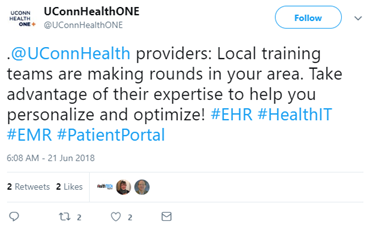
Regardless of how much training matters to physician success, all of the work can be undercut if the organization doesn’t work to build trust between the IT and clinical staff. In fact, “trust in IT” serves as one of the biggest predictors of EHR success when we analyze an Arch Collaborative member’s data post-survey. If providers don’t feel that the person guiding them through training and personalization understands them, their workflow, and their patient’s needs, every tip, trick, and suggestion will fall on deaf ears.
While the EHR has a long way to go before fulfilling the Utopian dreams of health IT optimists, provider organizations can finally implement some real, actionable changes. These tweaks can make the difference between burned-out physicians and successful EHR superusers.